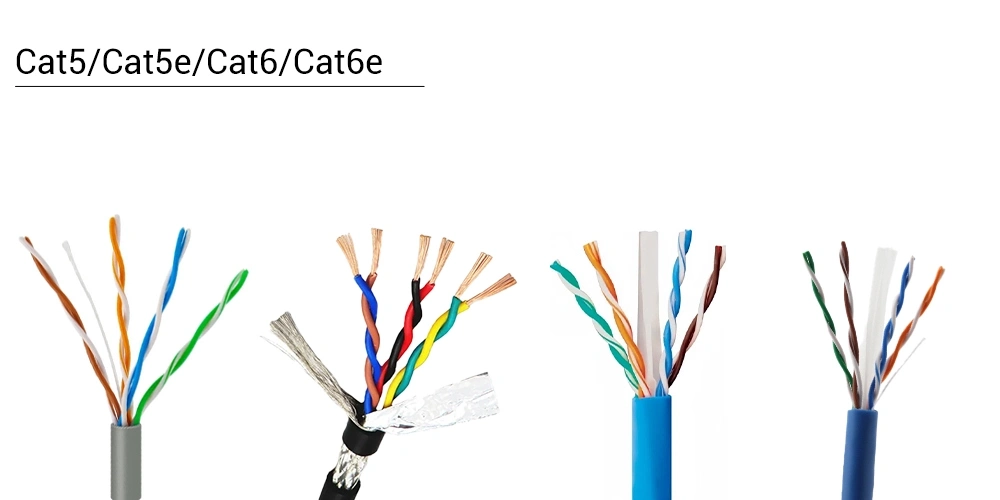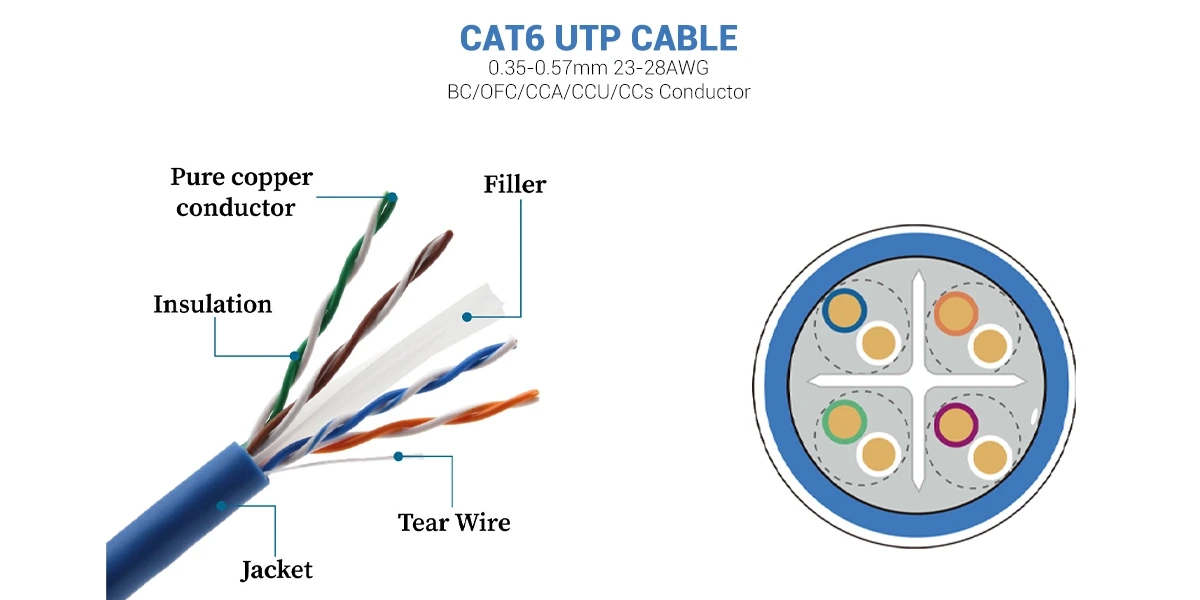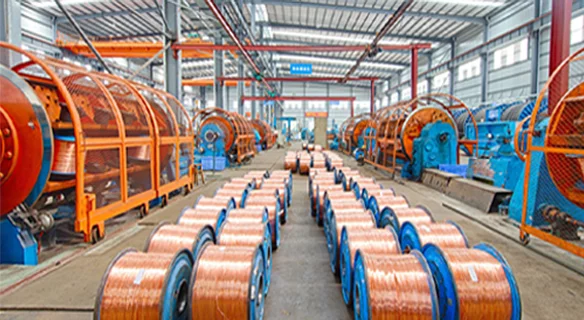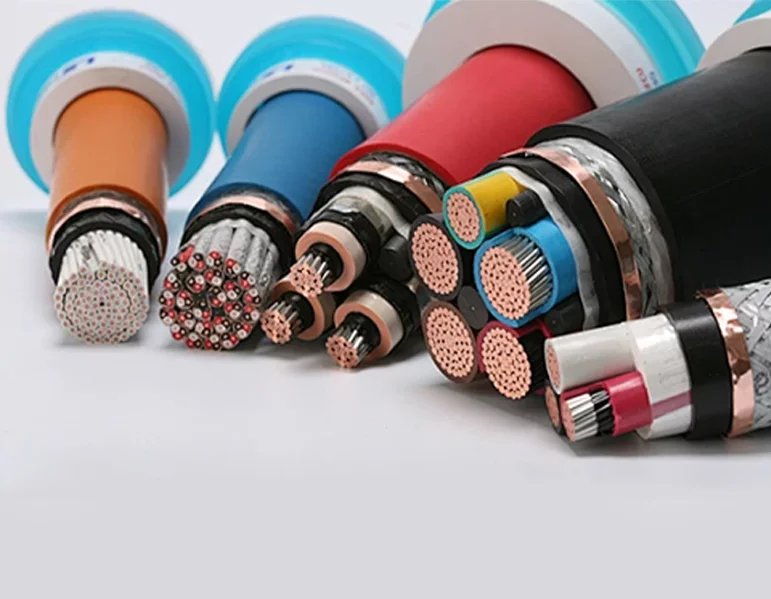The Ultimate Guide to Communication Cables: Types, Materials & Applications
Release time: 2025-01-14
Data transmission relies fundamentally on telecom cables, with communication cables standing at the core of modern connectivity networks. These essential components deliver high-performance solutions across numerous industries. If you are selecting the right type of communication cable for your application or searching for a reliable, high-quality cable manufacturer, you’ve come to the right place. This comprehensive guide offers expert insights to meet your specific wire and cable requirements.
Overview of Communication Cables
What Are Communication Cables?
Communication cables are low-voltage cables designed for transmitting electrical or optical signals. Unlike power cables, which handle high voltage and current, communication cables specialize in low-voltage, low-current applications. They deliver excellent performance in data transmission, Ethernet networking, and control circuits. Typically consisting of multiple wires or optical fibers, these cables are encased in insulating materials and protective jackets that preserve signal integrity and minimize interference.

Materials Used in Communication Cables
- Conductor: Most communication cables use tinned copper conductors.
- Insulation: Common insulation materials include Polypropylene (PP) and Polyvinyl Chloride (PVC).
- Polypropylene (PP): A versatile insulator with high moisture and chemical resistance, suitable for various environmental conditions.
- Polyvinyl Chloride (PVC): Known for flexibility and strong electrical insulation, PVC is widely used in indoor communication control cables.
- Jacket: PE and PVC are frequently used jacketing materials.
- PE Jacketing: Excels in outdoor settings due to superior weather and UV resistance.
- PVC Jacketing: Offers good mechanical strength and corrosion resistance, making it ideal for indoor use.
Applications of Communication Cables
Communication cables are versatile and serve a wide array of industries and functions. Key applications include:
- Computer Wiring: Connecting desktops to servers for seamless data sharing in office networks.
- Network Cabling: Establishing LAN and WAN infrastructures to enable smooth office communication.
- Wired Voice Transmission: Supporting landline telephones for clear and reliable voice communication.
- Broadcasting: Transmitting audio and video content to broad audiences.
- Ethernet Cabling: Using Cat6 cables to provide fast and stable internet connections.
- Industrial Cabling: Enhancing automation and control systems in industrial processes.
- Wired Data Transmission: Building secure data centers for efficient data transfer.
- Security Systems: Wiring theft and burglary alarm systems.
- Smoke Detectors: Installing wiring in commercial buildings for effective fire alarm systems.
- Signal Monitoring Systems: Connecting sensors and monitors for real-time equipment status tracking.
- Healthcare: Enabling telemedicine, electronic health records, and real-time patient monitoring.

Different Types of Communication Cables
There are several types of communication cables available. Below, we explore the five most common varieties:
1. Fiber Optic Cable
Fiber optic cables transmit signals using light pulses through optical fibers enclosed in an insulating jacket. These cables consist of a core, cladding, and protective housing, ensuring efficient data transmission and protection against external factors. Jacket materials include Polyethylene (PE), Polyurethane (PUR), Polyvinyl Chloride (PVC), and other non-conductive, heat-resistant coatings.
Available in single-mode and multimode types, each serves specific purposes. Color-coded jackets simplify identification: light blue often indicates multimode cables, orange is used for other multimode types, and yellow designates single-mode cables. Single-mode fiber optic cables offer higher bandwidth and lower attenuation, making them ideal for long-distance communication. Multimode cables, capable of transmitting multiple wavelengths, are better suited for short-distance applications.
2. Coaxial Cables
Coaxial cables feature a central core conductor, dielectric insulator, metal shield, and an outer plastic jacket. They are commonly used to connect radio transmitters and receivers, as well as for transmitting television signals and telephone communications to residential areas.
3. Ethernet Cable
Ethernet cables are among the most widely used cables for various applications. They are essential for connecting homes and businesses to the internet via routers. Available in multiple configurations such as Cat5e, Cat6, and Cat6a, each category offers different bandwidth capacities—with higher categories like Cat6 delivering superior performance.
These cables may also come in stranded constructions and are offered in both shielded (STP) and unshielded (UTP) versions. Shielded Ethernet cables include a protective coating to reduce connection issues in high-interference settings, while unshielded versions are more common and suitable for general use.
4. Twisted Pair Cable
Twisted pair communication cables play a vital role in modern digital communication networks. These cables consist of pairs of insulated copper wires twisted together, significantly reducing electromagnetic interference and crosstalk.
The two primary types of twisted pair cables are Unshielded Twisted Pair (UTP) and Shielded Twisted Pair (STP). UTP cables are cost-effective and easy to install, making them popular for Ethernet and telephone lines. STP cables include additional shielding and are often used in industrial environments where interference is a concern.
5. Telephone Cable
Although less common today, telephone cables remain essential in many business environments. They efficiently transmit voice and sound signals and are available in several forms, including indoor, outdoor, and modular telephone cables, helping maintain reliable communication networks in professional settings.
Choose Xijiangyue Cable for Your Communication Needs
We’ve explored the critical role communication cables play in our connected world—from basic principles and materials to their wide-ranging applications. Whether you’re setting up a computer network or building an advanced communication system, selecting the right cable is essential.
At Xijiangyue Cable, we supply high-quality wires and cables made from premium materials. Whether you need fiber optic, coaxial, or Ethernet cables, we provide reliable solutions tailored to your needs. Our expert team is ready to assist you in choosing the ideal cable for your specific application.
Contact us today to resolve your connectivity challenges with professional-grade communication cables!


